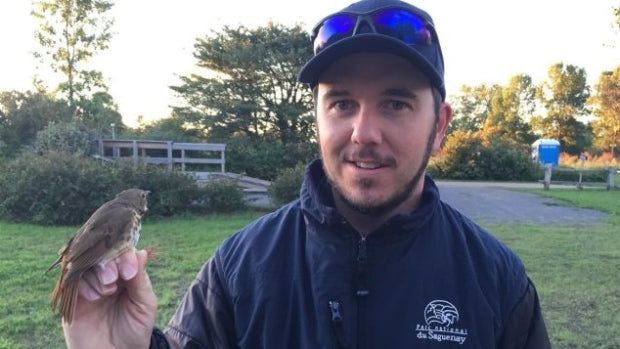Offer
Provide additional details about the offer you're running.
Provide additional details about the offer you're running.
Provide additional details about the offer you're running.

Image: Radio-Canada / Martine Côté
In the fall of 2015, we wrote a piece about the challenges facing what should be (and once was) one of Canada’s most plentiful bird species. The rusty blackbird, slightly smaller in size than a robin, has since been listed as a vulnerable species as researchers across North America scramble to get a handle on the science behind its declining numbers.
The updated status comes as surveys from both the North American Breeding Bird Survey and counts such as the Christmas Bird Counts indicate that these birds have lost upwards of 95 percent of their population since the mid-1900’s.
Located just southeast of Quebec City lies the the Observatoire d’oiseaux de Tadoussac, one of Canada’s leading bird observatories and one that is digging deep to uncover the truth behind why we might be on the brink of losing these birds.
The good news is, the Observatoire d’oiseaux de Tadoussac was just recently awarded a much-needed grant from the team at Bird Protection Quebec to continue their research over the next three years.

The $60,000 grant secured by the organization will be used to attach GPS transmitters to the legs of about 20 birds each year of the study in hopes of locating areas where these birds congregate and breed in the province of Quebec.
“When the birds will move, they will track the signals from the birds all around the migration corridor. So we will be able to follow each bird,” Pascal Côté, the director of the Observatoire d’oiseaux de Tadoussac told CBC News.
While research from the United States has uncovered some possible factors that could be negatively affecting the birds such as predation from red squirrels, deer, hawks and blue jays, habitat destruction is also a likely factor adding to the decline.
Côté himself has speculated that the destruction of Canada’s Boreal Forest could likely be an important factor to consider.
“Probably logging in boreal forests has a major impact,” he said.
This time of year is perhaps one of the best to catch these birds moving through our area as they stop along wet areas and flooded wetlands on their northbound journey.
High Quality Blend